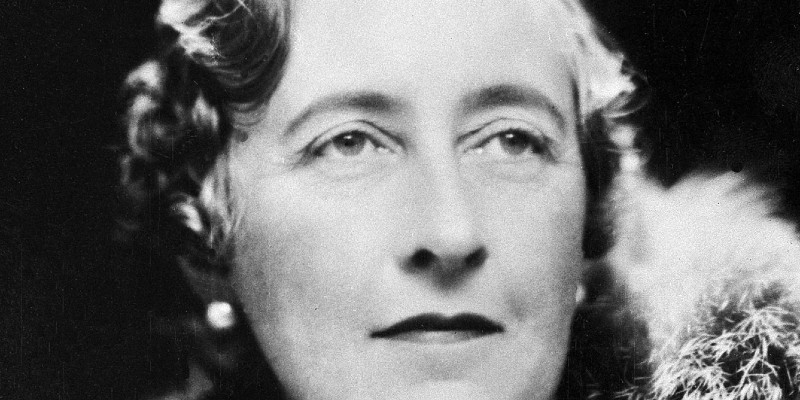Tisanes, hot chocolate, a pint, gin and gingerbeer, a strong cup of tea: it’s simply not a Christie mystery without an array of beverages at the ready. As a longterm Christie devotee, during re-reads, certain aspects of her usage of beverages kept asserting themselves. Whether it’s head honcho Poirot or a minor character murdered in the second chapter, what each character chooses to drink says something discernible about personality, class and historical context.
Christie’s most famed detectives, Poirot and Miss Marple, certainly had their liquid preferences. “Hercule Poirot sat at breakfast in his small but agreeably cosy flat in Whitehall Mansions. He had enjoyed his brioche and his cup of hot chocolate. Unusually, for he was a creature of habit and rarely varied his breakfast routine, he asked his valet, George, to make him a second cup of chocolate.” In Hercule Poirot’s Christmas, as well as in countless other Poirot short stories and mysteries, his passion for sweets also translates into his drink preferences. He loves his hot chocolate, as well as his sweet liqueurs, such as creme de menthe and sirop de cassis. It’s also hard to forget Poirot’s passion for tisanes, various herbal teas. These preferences become a literary nod to his “foreign” character. When Poirot requests these libations, the general response of his friends or those around him is to be incredulous that anyone would want to imbibe such concoctions. Poirot’s unusual liquid preferences for the time are chalked up to his Belgian nationality and status as an outsider, as well as his flamboyant stylistic choices.
On the flip side, elderly amateur detective Miss Marple is as stereotypically Victorian British as can be, preferring a strong cup of tea. No cocktails, liqueurs or ale for Miss Marple, although she does keep brandy on hand for gentlemen callers or in case of shock. In fact, the only occasion where Miss Marple nearly ends up being poisoned, in Nemesis, a soothing nighttime “milky drink” is offered to her. A nightcap or an espresso simply wouldn’t have been a logical in-character option for Jane Marple. Marple fans often find her character a reassuring presence, and her teatime scenes ooze coziness- even when in Bertram’s Hotel with its legendary high tea services, things aren’t as cozy as they seem.
Christie also makes subtle social commentary about class, gender and profession by what many of the other characters opt for: the burly policemen and British detectives in Christie’s work go in for ale or beer, the Bright Young Things and beatniks down cocktails and Champagne, and intellectuals opt for black coffee. The upper-class characters who had the means to travel in luxury, such as resort tourists in A Caribbean Mystery, indulge in tropical period drinks like Planters Punch (a Jamaican rum cocktail from the late 1800’s). In another exotic travel setting, passengers riding the Orient Express in Murder on the Orient Express indulged in cocktails, likely sidecars, Sazeracs and mint juleps.
Christie also famously offs a lot of her murder victims with the help of a drink, owing likely in part to her wartime work at a dispensary which gave her a vast working knowledge of various poisons. Heather Badcock meets her end after a poisoned daiquiri at a house party in The Mirror Crack’d From Side To Side. An unfortunate vicar departs the world following a lethal cocktail in Three Act Tragedy, while Rosemary Barton drinks a fatal Champagne laced with cyanide in, as one might guess from the title, Sparkling Cyanide. Several characters in her short stories are poisoned with black coffee or tea as the means to kill; with the bitter taste of coffee and the tannins in tea helping to mask the flavor of the danger lurking within.
Not only, though, do these liquids play a part in the storyline, but again, the murderous beverages are an indicator of the victim’s personality and societal status. One might even argue that the crime could not have occurred if said victim was not the type of person, as it were, to have downed the drink. Heather Badcock was chatty and overly excited to see her heroine. A rum-based daiquiri would’ve been exotic and exciting for someone who likely never had a “fancy” mixed drink on a regular basis. Wealthy Rosemary Barton faced her doom at a fancy birthday dinner at an upscale restaurant – champagne was de rigueur. The mention of a murdered elderly lady by the swapping out of hat paint for syrup of figs in Cards on the Table is yet another brilliant instance. Similar to how Miss Marple would never have been able to be poisoned with beer or a cappuccino, an invalid yet relatively well-to-do elderly woman’s killer would’ve also had to resort to a drink that made (fatal) sense for their victim to quench. Christie, I’ll drink to that!

















